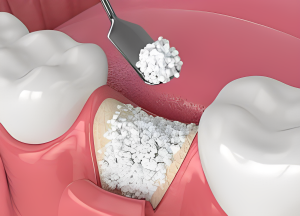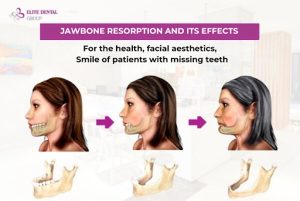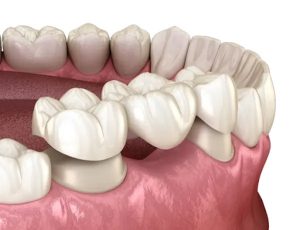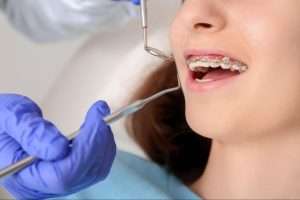Table of content
Bone loss in the jaw occurs after tooth loss and can lead to various complications such as gum recession, a sunken appearance, and facial asymmetry, all of which directly impact chewing function and facial aesthetics. Currently, dental implants are the only solution to prevent bone loss resulting from tooth loss. So, if there is bone loss, can dental implants still be used? Please read the article below to see Dr. Trần Hùng Lâm address this question.
1. Causes of Jaw Bone Loss and Its Impact
Jaw bone loss refers to the gradual reduction in the height, density, and volume of the jawbone. There are two primary causes of progressive jawbone resorption:
Tooth Loss Without Implant Restoration
Many people opt for removable dentures or dental bridges when they lose teeth. However, these methods only improve chewing function and do not replace the missing tooth roots. As a result, there is no stimulating force applied to the jawbone during chewing, leading to gradual bone resorption over time.
Periodontal Disease
Bacteria can attack and destroy the tooth sockets, leading to bone loss around the affected teeth. This results in teeth becoming loose and losing their ability to function properly.
View more: > Do dental bridges contribute to bone loss? How can it be prevented? > What are the effects of jawbone resorption? How to treat it?
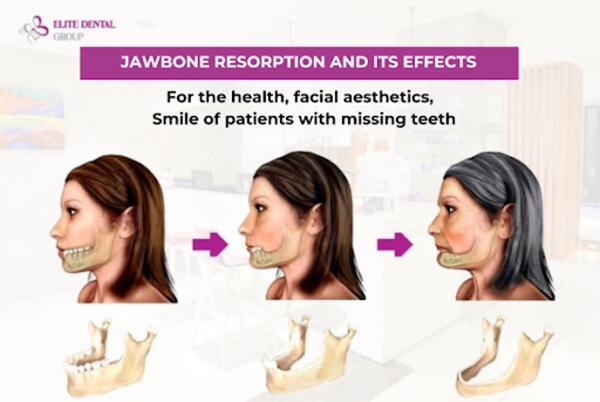
Generally, about 3 months after tooth loss, bone resorption begins to occur. If not treated promptly, it can lead to several issues, such as a crooked or uneven smile and premature facial aging. Surrounding teeth may shift into the empty space, causing misalignment and bite problems. Additionally, the decrease in jawbone height and density can lead to gum recession and further complicate chewing, as well as impact the aesthetic appearance of the smile.
2. Can you get dental implants with jaw bone loss?
In modern dentistry, dental implants are the optimal solution for tooth restoration. By replacing the lost tooth root, implants can restore nearly the same chewing function as natural teeth. Moreover, dental implants offer high aesthetics and can prevent further jaw bone loss.
However, many people believe that reduced bone volume may make it difficult for the titanium implant (the tooth root) to remain stable, potentially hindering the implantation process. As a result, those experiencing bone loss often wonder if implants are still possible. To address this concern, it is essential to understand the conditions of the jawbone necessary for successful implant placement.
2.1. Conditions of the jawbone for dental implant placement
For successful dental implant placement, the jawbone must meet the following criteria:
- Healthy bone with sufficient density and volume.
- No damage or infection in the area where the implant will be placed.
In cases where bone density is low or the bone is not thick enough due to bone loss, the dentist will provide appropriate recommendations based on the specific condition. If there is significant bone loss, the dentist may restore it using bone grafting techniques. Currently, there are two methods:
- Autogenous bone grafting: The dentist uses the patient’s own bone for the graft. This method has a high success rate due to easier integration.
- Synthetic bone grafting: The dentist uses artificial bone material for the graft. Once the grafted bone has stabilized, implants can be placed as usual.
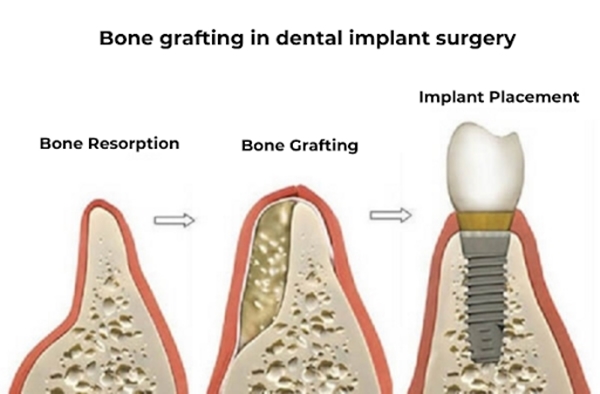
2.2. Can dental implants be placed with bone loss?
In summary, it is indeed possible to place dental implants in cases of bone loss to restore chewing function and smile aesthetics. If there is minimal bone loss, implants can still be placed, and once the implants integrate with the body, chewing activity can help improve the bone loss condition.
For cases with significant bone loss, bone grafting and sinus lifting may be required to ensure that the jawbone meets the conditions necessary for implant placement.
The cost of bone grafting for dental implants is a common concern for those planning to get implants but require bone grafting due to insufficient jawbone density. Follow this article to prepare financially for your treatment. 1. Factors Affecting the Cost of Bone Grafting The cost of bone grafting for…
3. Considerations for Bone Grafting in Dental Implant Placement
Bone grafting is a complex procedure in dentistry, and not all dentists may be able to perform it effectively. Incorrect treatment can lead to complications such as sinus perforation, infection, or bone resorption, which can impact both the health and quality of life of the patient. Therefore, it is crucial to choose a reputable dental center and a skilled, experienced dentist for treatment.
Additionally, to achieve a high success rate, patients should:
- Avoid smoking and alcohol consumption before and after treatment.
- Follow the dentist’s medication instructions.
- Maintain good oral hygiene to prevent infection.
- Attend follow-up appointments as scheduled.
4. Elite Dental – Specialized Implant and Bone Grafting Center with Safe, Reputable, and Long-lasting Results
Established in 2012, and originally known as An Sinh Hospital, Elite Dental is a trusted center for implant and bone grafting treatments. With a team of highly skilled and experienced dentists, Elite Dental has successfully treated thousands of patients with bone grafting and implants.

Elite Dental invests in comprehensive equipment to enhance both the results and patient experience, including a CBCT scanner for precise assessment of jawbone density and PRP centrifuge technology for accelerated healing and faster integration of grafted bone.
Adhering to the philosophy of “maximizing the preservation of natural teeth for patients,” Elite Dental always seeks the optimal solution for each case of tooth loss to provide effective and sustainable results.
From the above article, you can understand whether it is possible to replace lost teeth with implants despite bone resorption. Early implant placement to restore lost teeth helps prevent complications caused by tooth loss, particularly jawbone resorption. Therefore, it is advisable to replace lost teeth as soon as possible. For any further questions, please contact Elite Dental for expert consultation.
Related posts: > How fast can bone loss lead to losing teeth? How to prevent it > Implants vs. Other Prosthesis Solutions: A Detailed Comparison > How long does dental implant surgery last, what factors influence it?


